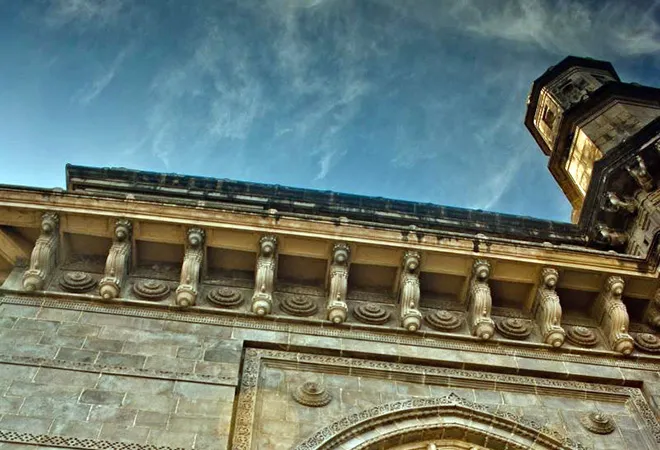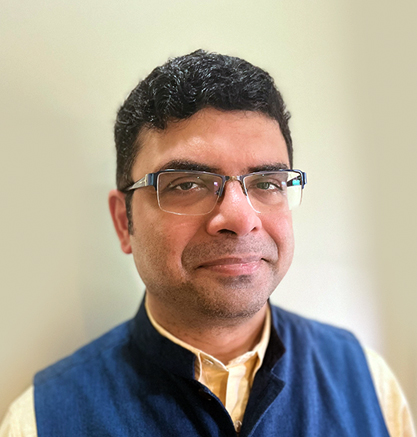-
CENTRES
Progammes & Centres
Location
Paradiplomacy and leveraging links with other cities is useful in attracting investment and technology, and fostering cultural understanding.

This article is part of the series — Colaba Edit.
Mumbai has long been the ‘gateway of India’ to the world and a melting pot of global influences. Sediments discovered north of the city indicate that the seven islands of Mumbai were inhabited since the Stone Age. Emperor Ashoka incorporated the islands circa 3rd century BCE, and they became a hub of Hindu and Buddhist religion and culture with Buddhist monks and scholars creating the inscriptions and sculptures of the Kanheri and Mahakali caves. Later, control of the islands passed to several homegrown dynasties and then to the Portuguese Empire. Its tryst with global power politics had only just begun. From the Portuguese Empire, it came into the possession of the East India Company when in Charles II of England married Catherine of Braganza in the 17th century and received the seven islets of Bombay (as it was called then) as part of the dowry. The city grew through the conjuring up of land from the sea at the initiative of then Bombay governor William Hornby, and over the next few decades was followed by the construction of causeways to link the seven islets separated by sea and swamp in the mid-18th century.
Mumbai has been a constantly evolving over the past 150 years, and has in the last 25 years made a rapid economic transition from trade to services. As India’s financial capital, the city hosts major corporate headquarters, is the main destination for foreign investment and joint ventures, is home to two regional stock exchanges where large Indian firms are capitalised, and is a hub for smaller businesses with national and international reach.
Mumbai is also home to South Asia’s biggest cultural industry and export — Bollywood. Bollywood is now a US$ 4 billion industry, with a large chunk of its revenue coming from abroad. In 2017, collections for Indian movies overseas jumped to US$ 367 million from US$ 125 million a year earlier. Besides being a money-spinner, the sector generates employment for nearly one million people and has tremendous potential to enter new markets (such as the movie ‘Dangal’ raking in around US$ 200 million in China).
Yet, in the 2019 Global Power City Index, an assessment of cities on their ability to attract people, capital and enterprises from around the world, Mumbai is ranked at the bottom.
In recent years, ‘city diplomacy’ has gained traction, leading to significant linkages between fledgling urban clusters. In 2016, the first citizens of about 60 cities came together in a ‘Global Parliament of Mayors’ to strengthen relationships with multinational institutions, civil society groups and business corporations. In the wake of the pandemic, when local and national governments were still debating a centralised response, the mayors met to tackle the effects of the contagion and offer some unique solutions to urban issues through a trans-local political agenda.
Mayor Oscar Escobar of Palmira, Colombia, spoke for the need to bridge the digital divide by canvassing opinion on making the internet a human right so that children will continue to have access to tools of education even during crises. Nearly 70 percent of Palmira households earned their income through the informal sector before the pandemic; in the aftermath, the city began rebuilding through data collection to bring businesses into the formal sector by ensuring their registration and supporting entrepreneurship by offering courses, credit facilities and tax benefits. Mayor Manuel de Araujo of Quelimane in Mozambique highlighted the city’s attempts to bring in urban transport sustainability amid the pandemic. The city promoted cycling as a mode of transport, leading to an ease in travel restrictions during the pandemic.
Mumbai is India’s financial capital, yet due to a lack of adequate investment for a modern public transport system, lack affordable housing and other amenities, cities like Gurugram (Gurgaon) have found favour among corporate India and emerged as a favourite of technology majors. Since 2015, plans have been underway to construct an international financial centre at the Bandra-Kurla Complex, on the lines of similar facilities in Singapore and Dubai, but the Gujarat International Finance Tech-City in Ahmedabad has seen greater attention from the Centre. At the same time, some states are catching up as attractive investment destinations and important economic institutions, like the trademark patent office, have been relocated outside Mumbai.
Mumbai must shore up its international linkages and learn from other paradiplomatic initiatives to leverage its many advantages. For instance, the city has much to learn from Alberta, Canada, which in July 2020 formed an agency to market the province and chase capital inflows into sunrise sectors like technology and financial services. Alberta maintains offices in international cities focussed on bringing in investment.
There have been some efforts to engage with paradiplomatic institutions on issues of concern. In December 2020, Mumbai became part of the C40 initiative, a worldwide network of cities determined to address challenges posed by climate change. In 2017, Maharashtra drafted a state climate change action policy and identified Mumbai as a vulnerable district. Maharashtra’s cities are likely to face a 22 percent to 32 percent rise in extreme weather events by the end of the current decade. In September 2020, the City Climate Finance Gap Fund was launched to support city and local governments facing barriers to financing for climate-smart projects. The agency offers technical and advisory services to assist local leaders in prioritising and preparing climate-smart investments and programmes at an early stage, with the goal of accelerating preparation, enhancing quality, and ensuring they are bankable.
Mumbai must scale up its engagement with the multilateral pacts involving subnational governments like the ‘Cities Alliance’ — a global partnership helping in slum upgradation. The Dharavi redevelopment project has been in the works for over 15 years. The rapid spread of COVID-19 in the area underscored issues related to lack of proper sanitation and healthcare facilities, leading to demands to expedite its reconstruction.
In 2014, Shanghai and Mumbai signed agreements to increase cooperation in the fields of information technology and tourism. Yet collaboration initiatives between the municipal bodies of the two cities have not gathered pace. Although Mumbai has a sister city tie-up with Stuttgart, Germany, there is a lot to be gained by partnering with Asian cities, which share more similarities.
Paradiplomacy and leveraging links with other cities is useful in attracting investment and technology, and fostering cultural understanding. South Mumbai, home to over 40 foreign consulates, can play a big role in this endeavour. Throughout history, ‘Bombay’ was enriched through its links to the world. It is now time to capitalise on this connection to make Mumbai great again.
The views expressed above belong to the author(s). ORF research and analyses now available on Telegram! Click here to access our curated content — blogs, longforms and interviews.

Kalpit A Mankikar is a Fellow with Strategic Studies programme and is based out of ORFs Delhi centre. His research focusses on China specifically looking ...
Read More +